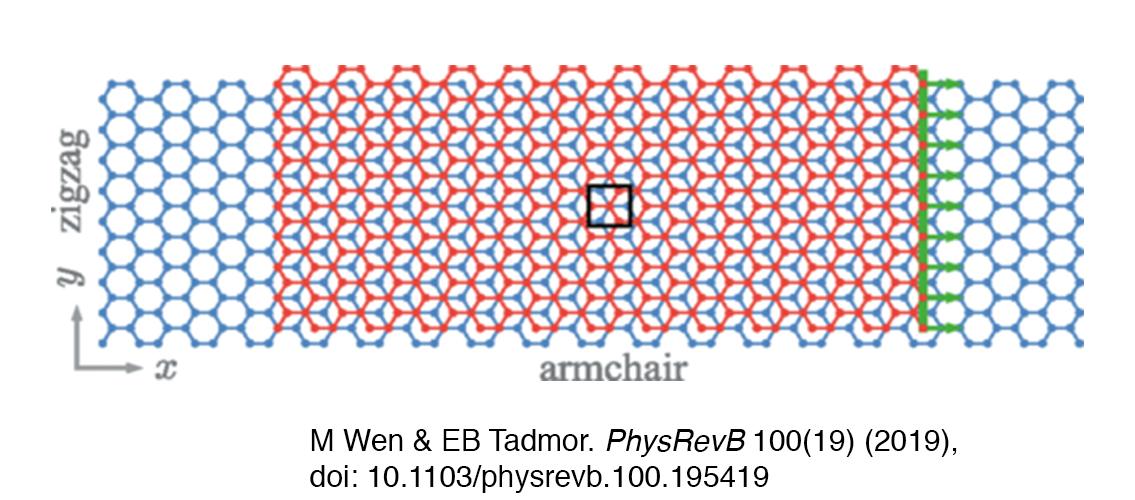
Graphene, a two-dimensional form of carbon, has generated a great deal of excitement since its discovery. The material has several applications in the fields of electronic devices, sensors, energy generation and storage, and medicine. Researchers have been experimenting with stacking 2D graphene layers, giving rise to entirely new kinds of materials by trying different stacking orders and orientations. Computer simulations can be used to determine the properties of these stacks, but existing simulation methods are computationally expensive and difficult to program to factor in both the intralayer and interlayer variables.
MSI PI Ellad Tadmor (professor, Aerospace Engineering and Mechanics) and his student Mingjian Wen recently published a paper describing an interatomic potential - a type of mathematical function used to calculate potential energy between atoms - that works for multilayer graphene structures. The potential, called “hNN-Grx” is a hybrid including a neural network for short-range interactions and a physics-based potential for long-range ones. It can be used for any number of layers. The potential was trained using machine-learning techniques against a large dataset that contained monolayer graphene, bilayer graphene, and graphite configurations that had been found using quantum mechanical density functional theory (DFT) methods. The potential had good success in a number of tests, showing accurate results for both interlayer and intralayer atomic interactions. The paper was published in the journal Physical Review B and can be found on the journal website: M Wen and EB Tadmor. 2019. Hybrid Neural Network Potential for Multilayer Graphene. Physical Review B 100(19). doi: 10.1103/physrevb.100.195419. The new potential can be found on the OpenKIM interatomic potential repository.
Professor Tadmor uses MSI for several projects that use high-performance methods for spanning multiple length and time scales in atomistic simulations of materials.
Image description: Representation of the simulation supercell used to compute the friction force in bilayer graphene with and without covalently bonded divacancies in adjacent layers. The force required to pull the top layer to the right along the armchair direction is measured. The black rectangle indicates the location of divacancies when included. Image and description, M Wen et al., Phys Rev B 100(19), doi: 10.1103/physrevb.100.195419 (2019).
posted on January 23, 2020